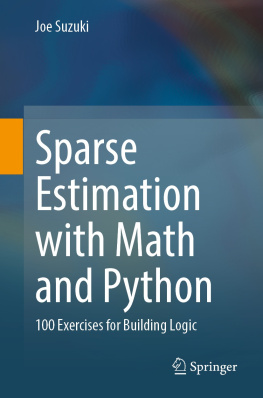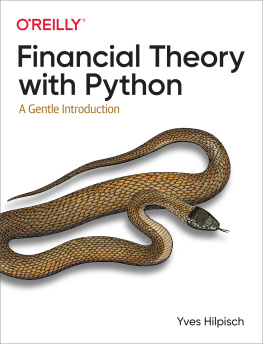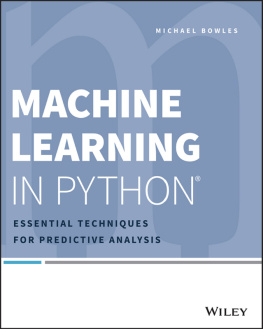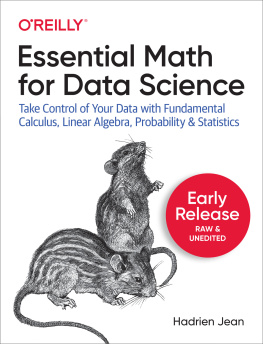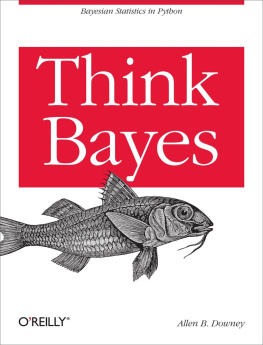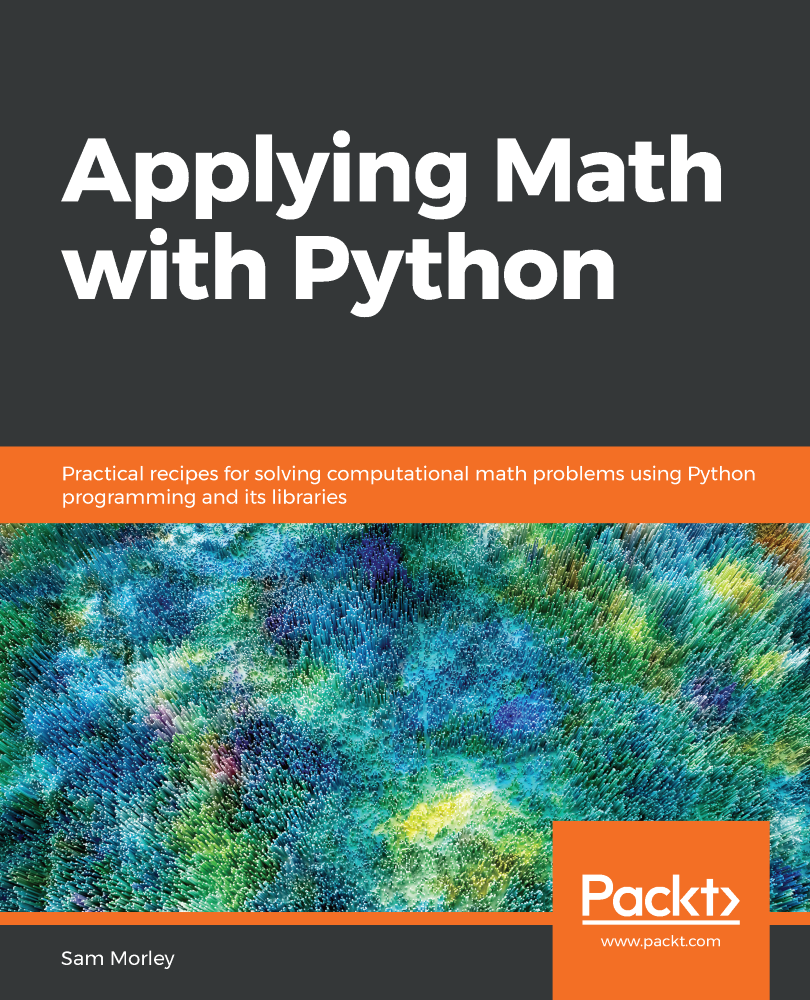Sam Morley - Applying Math with Python: Practical recipes for solving computational math problems using Python programming and its libraries
Here you can read online Sam Morley - Applying Math with Python: Practical recipes for solving computational math problems using Python programming and its libraries full text of the book (entire story) in english for free. Download pdf and epub, get meaning, cover and reviews about this ebook. year: 2020, publisher: Packt Publishing - ebooks Account, genre: Home and family. Description of the work, (preface) as well as reviews are available. Best literature library LitArk.com created for fans of good reading and offers a wide selection of genres:
Romance novel
Science fiction
Adventure
Detective
Science
History
Home and family
Prose
Art
Politics
Computer
Non-fiction
Religion
Business
Children
Humor
Choose a favorite category and find really read worthwhile books. Enjoy immersion in the world of imagination, feel the emotions of the characters or learn something new for yourself, make an fascinating discovery.

- Book:Applying Math with Python: Practical recipes for solving computational math problems using Python programming and its libraries
- Author:
- Publisher:Packt Publishing - ebooks Account
- Genre:
- Year:2020
- Rating:5 / 5
- Favourites:Add to favourites
- Your mark:
Applying Math with Python: Practical recipes for solving computational math problems using Python programming and its libraries: summary, description and annotation
We offer to read an annotation, description, summary or preface (depends on what the author of the book "Applying Math with Python: Practical recipes for solving computational math problems using Python programming and its libraries" wrote himself). If you haven't found the necessary information about the book — write in the comments, we will try to find it.
Discover easy-to-follow solutions and techniques to help you to implement applied mathematical concepts such as probability, calculus, and equations using Pythons numeric and scientific libraries
Key Features- Compute complex mathematical problems using programming logic with the help of step-by-step recipes
- Learn how to utilize Pythons libraries for computation, mathematical modeling, and statistics
- Discover simple yet effective techniques for solving mathematical equations and apply them in real-world statistics
Python, one of the worlds most popular programming languages, has a number of powerful packages to help you tackle complex mathematical problems in a simple and efficient way. These core capabilities help programmers pave the way for building exciting applications in various domains, such as machine learning and data science, using knowledge in the computational mathematics domain.
The book teaches you how to solve problems faced in a wide variety of mathematical fields, including calculus, probability, statistics and data science, graph theory, optimization, and geometry. Youll start by developing core skills and learning about packages covered in Pythons scientific stack, including NumPy, SciPy, and Matplotlib. As you advance, youll get to grips with more advanced topics of calculus, probability, and networks (graph theory). After you gain a solid understanding of these topics, youll discover Pythons applications in data science and statistics, forecasting, geometry, and optimization. The final chapters will take you through a collection of miscellaneous problems, including working with specific data formats and accelerating code.
By the end of this book, youll have an arsenal of practical coding solutions that can be used and modified to solve a wide range of practical problems in computational mathematics and data science.
What you will learn- Get familiar with basic packages, tools, and libraries in Python for solving mathematical problems
- Explore various techniques that will help you to solve computational mathematical problems
- Understand the core concepts of applied mathematics and how you can apply them in computer science
- Discover how to choose the most suitable package, tool, or technique to solve a certain problem
- Implement basic mathematical plotting, change plot styles, and add labels to the plots using Matplotlib
- Get to grips with probability theory with the Bayesian inference and Markov Chain Monte Carlo (MCMC) methods
This book is for professional programmers and students looking to solve mathematical problems computationally using Python. Advanced mathematics knowledge is not a requirement, but a basic knowledge of mathematics will help you to get the most out of this book. The book assumes familiarity with Python concepts of data structures.
Table of Contents- Basic Packages, Functions, and Concepts
- Mathematical Plotting with Matplotlib
- Calculus and Differential Equations
- Working with Randomness and Probability
- Working with Trees and Networks
- Working with Data and Statistics
- Regression and Forecasting
- Geometric Problems
- Finding Optimal Solutions
- Miscellaneous Topics
Sam Morley: author's other books
Who wrote Applying Math with Python: Practical recipes for solving computational math problems using Python programming and its libraries? Find out the surname, the name of the author of the book and a list of all author's works by series.

